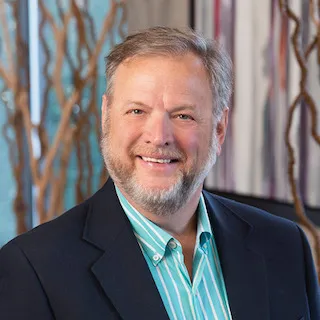The promise of cell therapy — transferring engineered cells into patient as a therapeutic — is filled with potential but difficult to achieve as scaling up cell production is a time-consuming task.

Increasing the speed of development will be critical to the success of these cell therapy-based treatments. One way to do this is through flow electroporation, a proprietary approach developed by MaxCyte that uses electric fields to make the engineering process quicker.
“This whole field of cell therapy is exploding and the area that we’re focused on is engineering these cells…(and) the next generation of cells...to dramatically reduce time to treat,” said Doug Doerfler, president and CEO of MaxCyte, which provides flow electroporation instruments to biotech and pharma companies.
The cell engineering company just inked a strategic platform license deal with Vertex Pharmaceuticals, giving the biotech non-exclusive clinical and commercial rights to use MaxCyte’s technologies and platforms to develop its CRISPR/Cas9-based gene editing therapy, exa-cel, for transfusion-dependent beta thalassemia or sickle cell disease.
PharmaVoice spoke with Doerfler about how the technology works, the field of cell therapy and how companies are developing new products for patients.
The interview has been edited for style and brevity.
PHARMAVOICE: What makes cell therapy so interesting right now?
DOUG DOERFLER: Cell therapy wasn’t considered to be an important — or even potential — therapeutic modality until (the work that) resulted in the approval of Yescarta and Kymriah in 2017.
The whole field of cell therapy wasn’t well recognized because it was considered high risk and low reward. And when those two products got approved, it really did check three boxes: Did it have clinical utility? Would the FDA approve it? Would Big Pharma and biotech be interested?
When those three boxes got checked, the whole field really took notice.
Tell us about your technology and the licensing process.
These companies are looking for the most efficient and effective way of engineering their cells. The platform that we’ve developed over the last 20 years allows them to do that. Our partners can use our platform suite of technologies to take a blood cell, for instance, and then edit that cell so … it has the ability to [do things like] work within a tumor microenvironment and allow the blood cell to be transplanted from a donor source to a recipient without an immune response. The electroporation technology uses electric fields to open the cell wall allowing the delivery of nucleic acids for cell engineering.
What’s really unique about what we do is that we do it at a large scale so that you can get a therapeutic dose. We also do it with a highly efficient process so you get the most cells as you possibly can engineered. And its high viability means the cells are fully functional for their intended purpose after the process.
How does the platform speed solutions, save money, etc.?
In cell therapy you’re doing relatively complex engineering of cells. You may have to do three or four different edits to make that cell effective. Our technology uses electric forces to enable delivery of molecules like CRISPR into the cell to engineer the cell.
We do it without the use of viruses, so it’s inherently safer. The development time for nonviral cell therapy is dramatically less, the costs are lower, and probably the biggest area that we’re focusing on is time to treat. If you’re using a more conventional virus-based cell therapy, it can take anywhere from a week or two weeks to actually engineer the cell, whereas if you use our technology, you can do it in a day. And that has a rather dramatic clinical impact.
If you’re a patient, you certainly don’t want to have to wait weeks to receive your therapy. You’d like to be able to get that therapy as soon as possible especially if you have a disease such as a late-stage cancer.
On the protein production side (we’re launching our new product), VLx, in September. It allows companies to produce gram quantities of monoclonal antibodies in a cGMP process and format, which allow (companies) to move more quickly into human trials or treatment in humans.
Where are you making the most progress so far?
On the cell therapy side, we currently have 17 partners — we have many products in the clinic with those partners, and some of them are actually in pivotal trials right now.
On the VLx side with the protein expression, that’s a relatively new market for us and we’re working with a handful of major biopharma companies under confidentiality agreements to do that beta testing for them. We believe the application will be for producing monoclonals for public health purposes and also for the production of new novel monoclonals and accelerating the preclinical path so they can get it to human trials faster.
Can you talk about the goal of ‘failing faster’ and how the VLx platform can help?
Let’s say a biotech company has identified a monoclonal antibody that it would like to put into a patient and begin clinical trials. In the classic way of doing that, you would take that sequence, then put those sequences into cells, and then you would select those cells to get a stabler producer cell for that product. And the time it takes to get that producer cell selected takes many, many months to do and you’re not always successful in doing that. It may take you six months or a year or even longer to be able to produce enough monoclonal antibodies to move into clinical development with that specific product.
What we’re doing with our technology allows the partner to produce a product rapidly using a cell line and our technology to produce the protein transiently, rapidly so it can go into the patient in a matter of perhaps months versus over a year.










